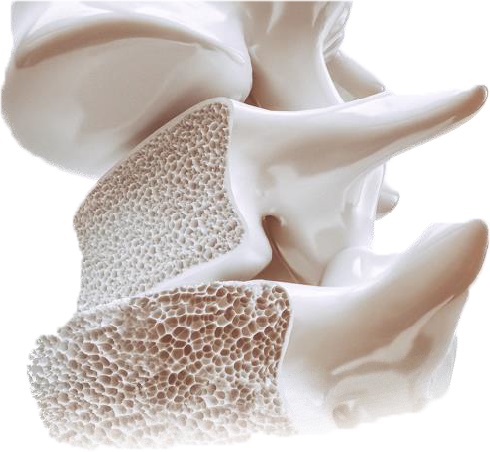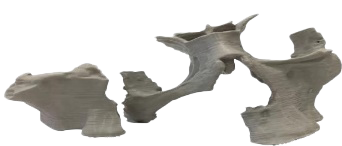Cyberbone
Syntplant
The company Syntplant uses materials and technologies it has developed for the production of implants based on bioabsorbable materials, including innovative bone-forming threads.
Our products are used wherever there is a need for bone loss replacement.
The implants we manufacture take advantage of the body’s natural ability to regenerate.

We provide customized bone and bone tissue implants, such as long bones, parts of the facial skeleton, parts of the mandible or vertebrae, or even the entire mandible or vertebrae, made from biocompatible materials, including bioabsorbable materials produced through 3D space printing using proprietary, innovative bone-forming threads—customized medical devices.
The devices will be developed using automated diagnostic imaging technology (CT scans) under the supervision of a physician-operator.
This will ensure that the implant fits perfectly into the bone loss area and will facilitate the doctor’s work in the surgical field, even in the smallest hospitals. Doctors will no longer need to process the provided material or the implant in the surgical field.
Additionally, our technology enables the reduction of both preoperative and postoperative time, the risk of complications during surgery, as well as postoperative risks. This applies to facial skeleton parts, sections of the mandible or vertebrae, or even the entire mandible or vertebrae, made from biocompatible materials, including bioabsorbable materials produced through 3D space printing using proprietary, innovative bone-forming threads—customized medical devices.
The devices will be developed based on automated diagnostic imaging technology (CT scans) under the supervision of a physician-operator.
This will ensure that the implant fits perfectly into the bone loss area and will facilitate the doctor’s work in the surgical field, even in the smallest hospitals.

Doctors will no longer need to process the provided material or the implant in the surgical field. Additionally, our technology allows for the reduction of both preoperative and postoperative time, the risk of complications during surgery, as well as the risk of postoperative complications, which translates to lower costs.

Comparison – Autograft vs. Cyberbone implants (maxillofacial&dental surgery)
| Autograft | Personalized, bioresorbable CYBERBONE implants | |
|---|---|---|
| Resorbability of the implant - bone regeneration | Yes | Yes |
| Risk of implant/transplant resorption without bone regeneration | Yes | No |
| Shape of the implant | Bone block not matched to the anatomical features of the defect or matched only minimally | Individually designed and fitted with 3D technology, guaranteeing an optimal fit |
| Number of implant specimens for the surgery | 1 piece only | Supply of at least 2 identical implants (1 reserve) |
| Number of surgical procedures | #1 – Taking the patient's own bone (e.g., from the hip bone plate) #2 – Augmentation of the bone defect |
#1 surgery – augmentation only |
| Possible connection between the implant and the titanium dental implant screw | Yes (dependent on defect topography and regeneration method) | Yes – The procedure can be performed simultaneously, meaning one treatment is performed. The titanium dental implant screw is placed directly in the Cyberbone implant before augmentation. There is no need to wait for the implant to be absorbed. The absorption process takes place independently of the dental reconstruction. |
| Type of anesthesia for surgical procedures | General anesthesia – in the case of taking a bone graft, for example, from the fibula or hip plate, or local anesthesia in the case of the oral cavity (small bone defects) | Only local anesthesia at augmentation |
| Properties not conducive to infection | Yes | Yes |
| Presence of BMP's | Yes | No |
| The rate of vascularization | High | Low |
| Timing of the surgical procedure | Long | Short |
| Dependent on operator skills | High | Low |
| Rebuilding time | Short | Long |
| Topographical limitations | Possibility to take a limited amount of autogenous bone | Unlimited, preoperational prototyping can be done in advance |
